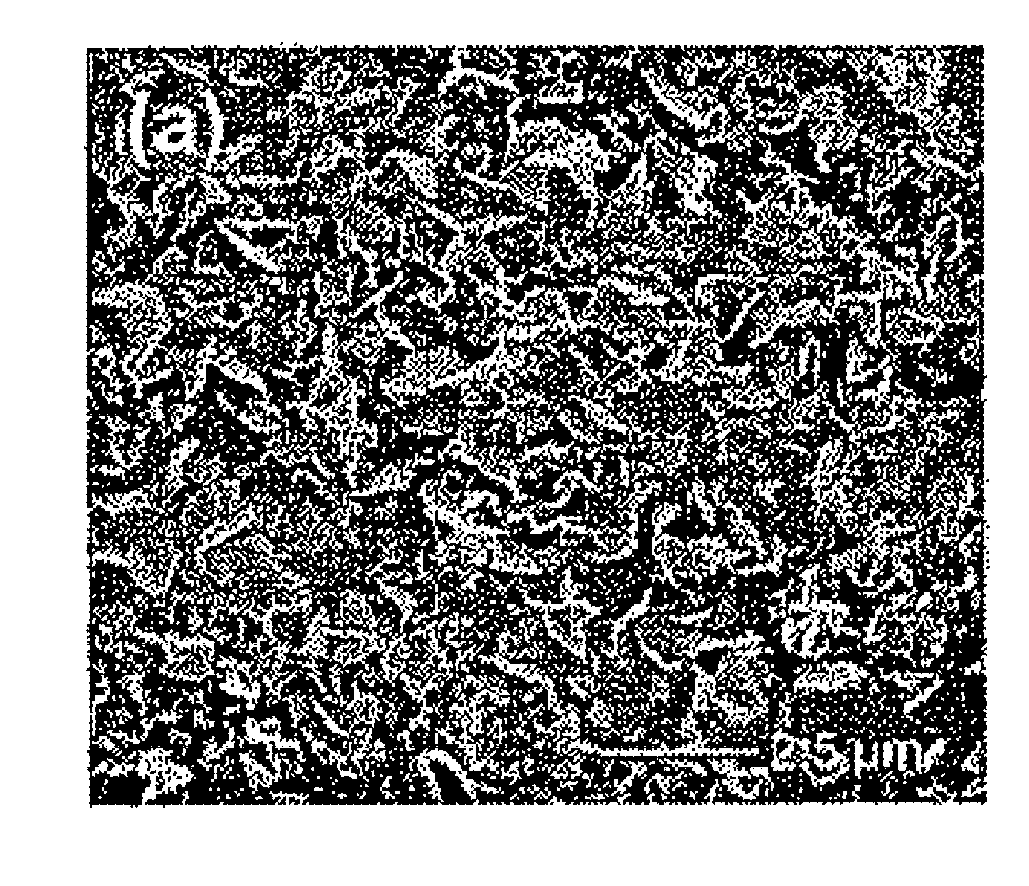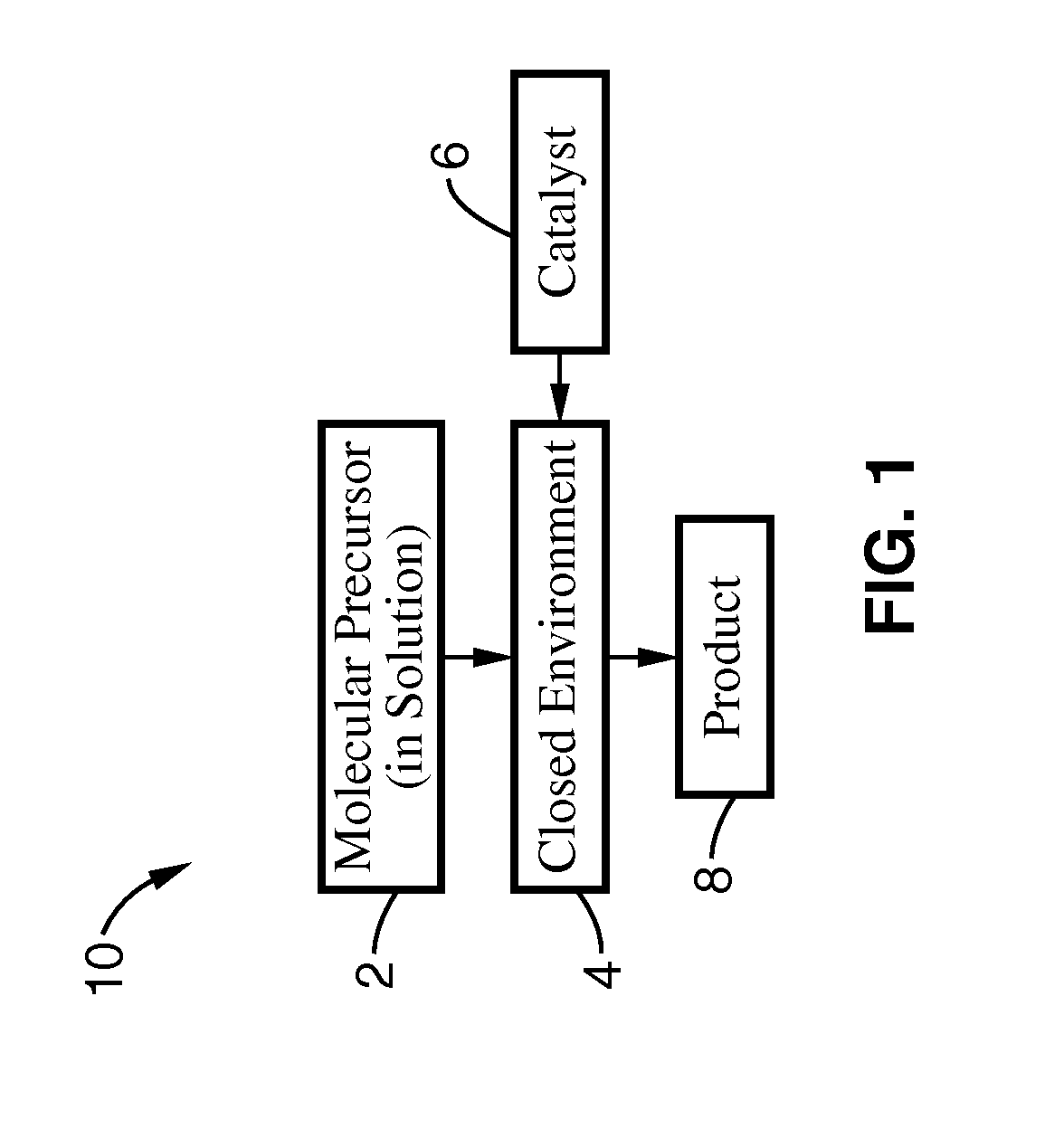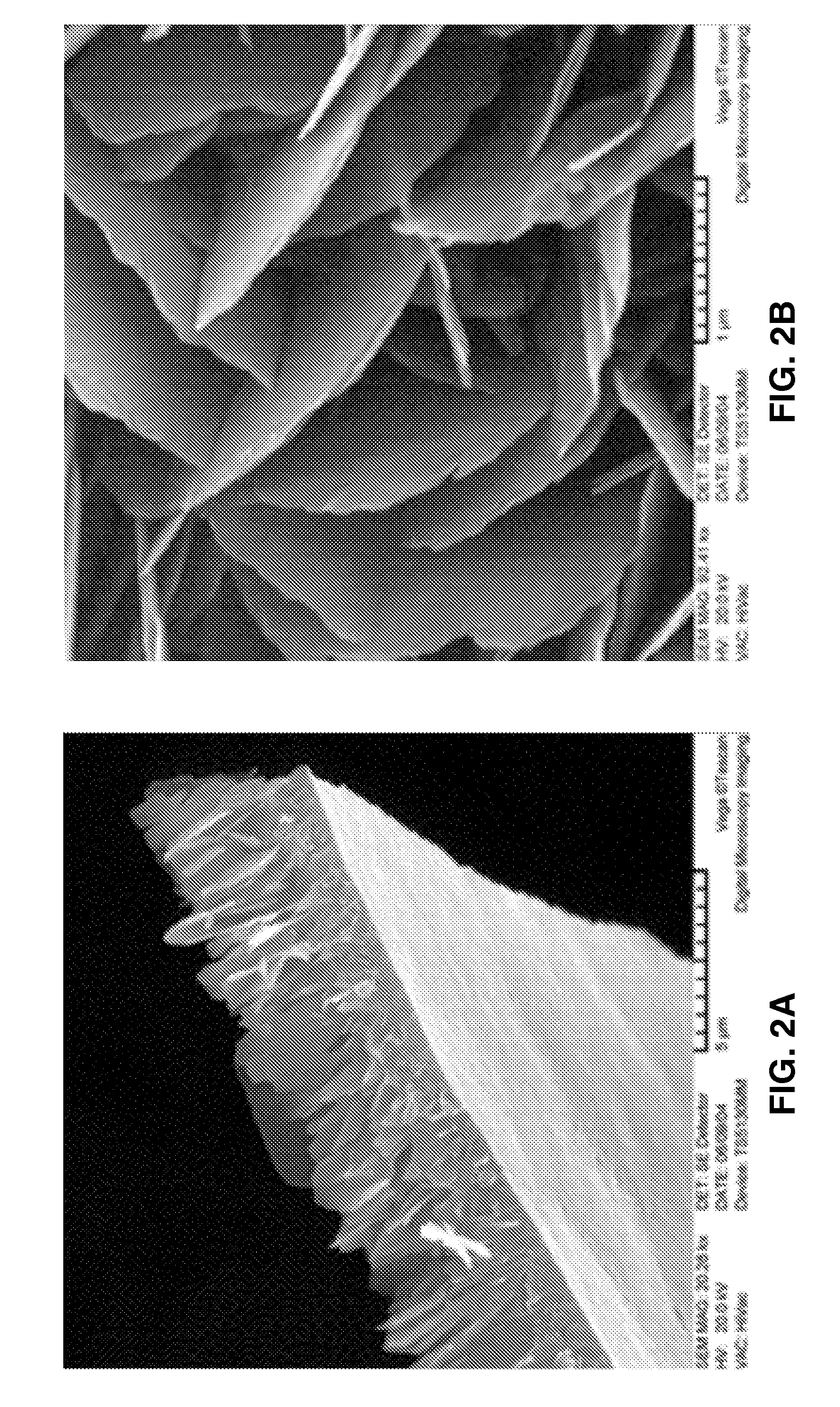Biologically inspired synthesis of thin films and materials
a thin film and biological inspiration technology, applied in the direction of alkali metal oxides/hydroxides, chemical vapor deposition coatings, germanium dioxide, etc., can solve the problems of difficult balance between precursor volatility and thermal stability, high cost of mbe, and limited application of this method, etc., to achieve easy modulation, minimize resistance, and maximize absorption efficiency
- Summary
- Abstract
- Description
- Claims
- Application Information
AI Technical Summary
Benefits of technology
Problems solved by technology
Method used
Image
Examples
example
[0092] All starting materials used in this study were commercially available and used without further purification. A dilute solution of NH4OH and separate solutions of either aqueous 0.1 M COCl2, 0.1 M Co(NO3)2, 0.1 M CoSO4, 0.1 M Zn(NO3)2 or 0.1 M Cu(NO3)2 were placed in the same enclosed chamber. For the preparation of Mn3(PO4)2.7H2O, 0.058 g of (NH4)2HPO4 (0.5 equiv.) wa added to 4 ml of 0.1 M MnCl2 solution. This mixture then was exposed to ammonia vapor from a dilute solution of NH4OH. The synthesis of metal hydroxide and phosphate thin films occurred at room temperature and ambient pressure over the course of 18 hours. After formation, the films were transferred onto a doubly distilled water surface to remove traces of starting material solution, using a Langmuir-Blodgett technique.
[0093] Scanning electron microscopy (SEM) was performed on dried samples using a Tescan Vega 5130 SEM. Powder X-ray diffraction (XRD) was performed using a Bruker D8 diffractometer with monochroma...
PUM
| Property | Measurement | Unit |
|---|---|---|
| temperatures | aaaaa | aaaaa |
| grain sizes | aaaaa | aaaaa |
| length scale | aaaaa | aaaaa |
Abstract
Description
Claims
Application Information
 Login to View More
Login to View More - R&D
- Intellectual Property
- Life Sciences
- Materials
- Tech Scout
- Unparalleled Data Quality
- Higher Quality Content
- 60% Fewer Hallucinations
Browse by: Latest US Patents, China's latest patents, Technical Efficacy Thesaurus, Application Domain, Technology Topic, Popular Technical Reports.
© 2025 PatSnap. All rights reserved.Legal|Privacy policy|Modern Slavery Act Transparency Statement|Sitemap|About US| Contact US: help@patsnap.com



